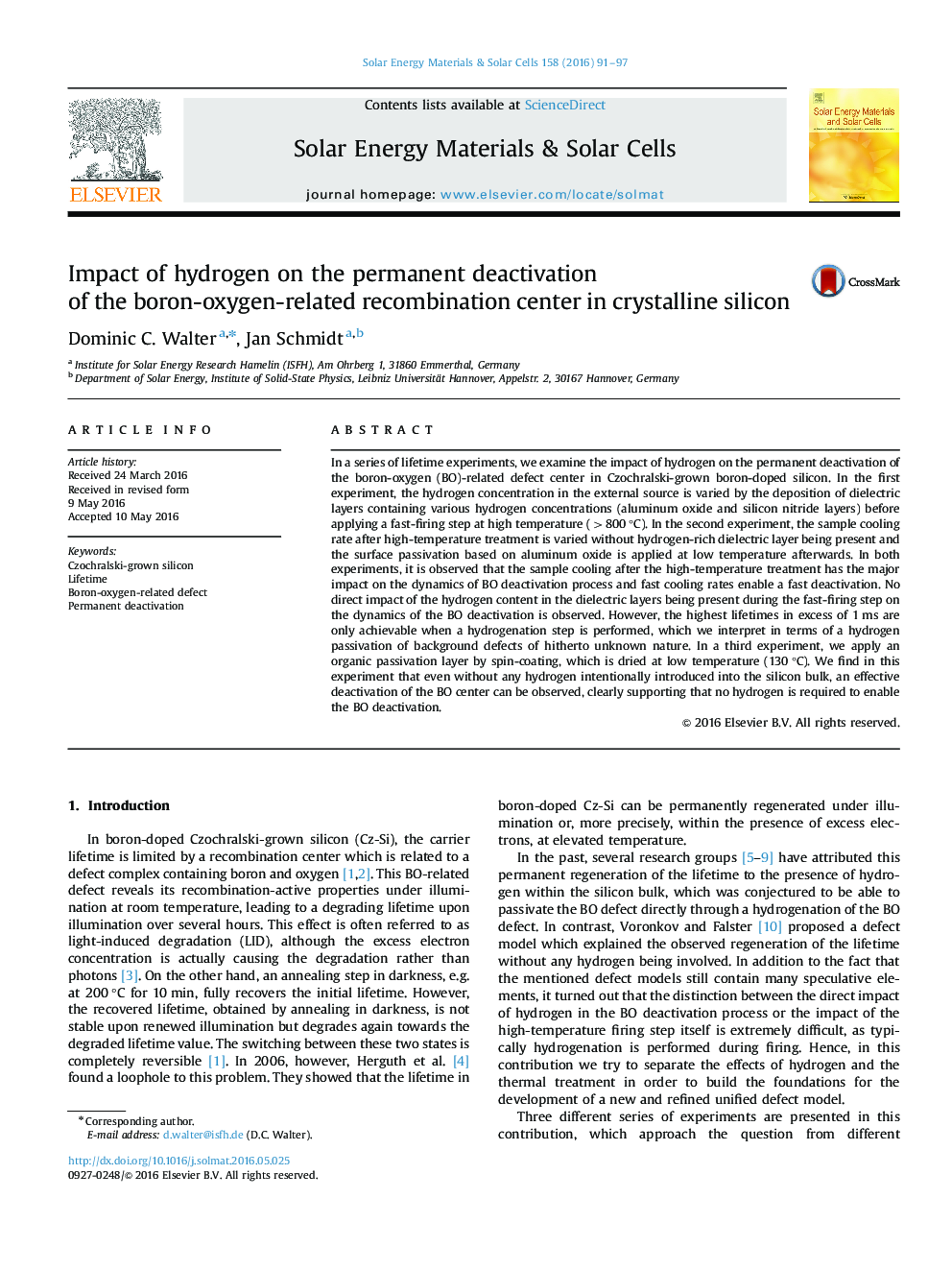| کد مقاله | کد نشریه | سال انتشار | مقاله انگلیسی | نسخه تمام متن |
|---|---|---|---|---|
| 6457430 | 1361708 | 2016 | 7 صفحه PDF | دانلود رایگان |
- A series of lifetime experiments with very different hydrogen concentrations in the silicon bulk are presented.
- Different hydrogen concentrations are realized by: deposition of different dielectric layers (aluminum oxide and silicon nitride) followed by a fast firing step, deposition of the dielectric layer after the last high temperature step and using the polymer PEDOT:PSS, dried at low temperatures, for surface passivation which inhibits in-diffusion of hydrogen into the silicon bulk.
- In all cases a permanent deactivation of the BO-related defect center is observed.
- High lifetimes in excess of 1Â ms are only observed when a hydrogenation step is performed, which we interpret in terms of an hydrogen passivation of background defects.
In a series of lifetime experiments, we examine the impact of hydrogen on the permanent deactivation of the boron-oxygen (BO)-related defect center in Czochralski-grown boron-doped silicon. In the first experiment, the hydrogen concentration in the external source is varied by the deposition of dielectric layers containing various hydrogen concentrations (aluminum oxide and silicon nitride layers) before applying a fast-firing step at high temperature (>800 °C). In the second experiment, the sample cooling rate after high-temperature treatment is varied without hydrogen-rich dielectric layer being present and the surface passivation based on aluminum oxide is applied at low temperature afterwards. In both experiments, it is observed that the sample cooling after the high-temperature treatment has the major impact on the dynamics of BO deactivation process and fast cooling rates enable a fast deactivation. No direct impact of the hydrogen content in the dielectric layers being present during the fast-firing step on the dynamics of the BO deactivation is observed. However, the highest lifetimes in excess of 1 ms are only achievable when a hydrogenation step is performed, which we interpret in terms of a hydrogen passivation of background defects of hitherto unknown nature. In a third experiment, we apply an organic passivation layer by spin-coating, which is dried at low temperature (130 °C). We find in this experiment that even without any hydrogen intentionally introduced into the silicon bulk, an effective deactivation of the BO center can be observed, clearly supporting that no hydrogen is required to enable the BO deactivation.
Journal: Solar Energy Materials and Solar Cells - Volume 158, Part 1, December 2016, Pages 91-97
